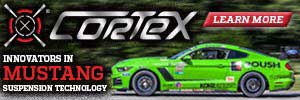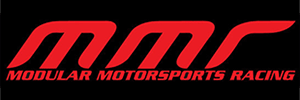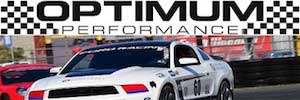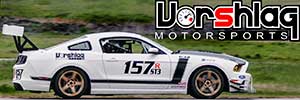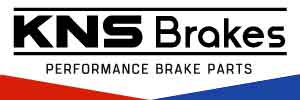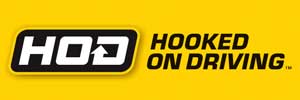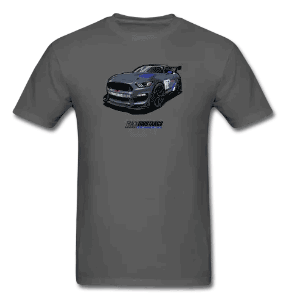I have tried to do the break-in procedures on Hoosiers in the past but found that 1) it's logistically very difficult and 2) didn't provide any measurable return on effort/time invested.
- Welcome to the Ford Mustang forum built for owners of the Mustang GT350, BOSS 302, GT500, and all other S550, S197, SN95, Fox Body and older Mustangs set up for open track days, road racing, and/or autocross. Join our forum, interact with others, share your build, and help us strengthen this community!
You are using an out of date browser. It may not display this or other websites correctly.
You should upgrade or use an alternative browser.
You should upgrade or use an alternative browser.
Tire falls off cliff
- Thread starterbob
- Start date
This site may earn a commission from merchant affiliate links, including eBay, Amazon, and others.
More options
Who Replied?Fabman
Dances with Racecars
- 6,553
- 8,204
- Exp. Type
- W2W Racing
- Exp. Level
- 20+ Years
I have used the Tire Rack heat cycling service quite a bit, though I'm not sure how effective it really is.I have tried to do the break-in procedures on Hoosiers in the past but found that 1) it's logistically very difficult and 2) didn't provide any measurable return on effort/time invested.
Maybe I'm just paying them to waste a heat cycle for me. Hmmm....
- 147
- 60
1. We have tried the Tire Rack heat cycling and it does not work (should say it does not work for us). Waste of money.
2. If anything seriously goes wrong with the tire, Hoosier will not replace it if it has been Tire Rack heat cycled.
3. If properly heat cycled and allowed to cure, for us the tires have lasted quite a bit longer before dropping off (following Hoosier recommendations and 1 week cure).
Of course proper alignment and pressures are a must, as are extra wheels.
However, if you can afford it, run stickers for a sprint race and then get rid of them. You will love your third lap of the race!
2. If anything seriously goes wrong with the tire, Hoosier will not replace it if it has been Tire Rack heat cycled.
3. If properly heat cycled and allowed to cure, for us the tires have lasted quite a bit longer before dropping off (following Hoosier recommendations and 1 week cure).
Of course proper alignment and pressures are a must, as are extra wheels.
However, if you can afford it, run stickers for a sprint race and then get rid of them. You will love your third lap of the race!
Last edited:
- Thread starter
- #24
Bill Pemberton
0ld Ford Automotive Racing Terror
This is an interesting thread as there is a large majority of us who have run Hoosiers over the years or are currently using them. Bob, the one item I was not sure about is are you racing in Time Trials or W2W, as I know many feel the A7 is the only way to go running TTs. I have heat cycled Hoosiers, BFGs, etc. and had good luck as I would park the tires for weeks after doing some smooth, reasonable laps on them. Sure it is tough to do if racing, but we usually have a practice session prior to qualifying and I run a new set then and then they are done for the weekend. Rob is so correct that scuffs will never whip up on stickers for qualifying, but few of us have the budget that the Aquilante's have at Phoenix, so getting decent life out of the tires can be critical. For that reason I have only run R7s, and they are not as quick as the A7s, but if you are running a 30-40 minute race I have found them more consistent.
The other item is based on the tracks one runs , and I know there is a big variance among the three I run. Two are critical for rotation and on one it seems almost unnecessary - though we know it should not be ignored.
Currently running BFG gforce R1s ( somewhat similar to an R7, but they come in slower ) and they stay quite constant throughout a race, but they are not making the 315 size anymore , so back to Hoosiers for 2021. I would suggest you consider the R7s Bob, as they do seem to work well on the Mustang and using simple physics that you have mentioned a couple of time, you are driving a car that is 300 lbs more than your previous ride. The R7 will not get as warm as quick , has a bit more longevity , and it may work better for you since the car's weight is also part of your wear.
This is a good discussion , and the one question you asked initially can likely be answered by many of us simply, " Yes, I have had a tire go off dramatically at a race." Usually it ended up because the tire was old ( lots of cycles ) , it was found to be low on air compared to the others, I found the track I was running was a cheese grater, it was super hot out, I had not rotated enough , etc.
Appreciate Blacksheep 1 adding info here as he has more experience with Hoosiers than art of us.
The other item is based on the tracks one runs , and I know there is a big variance among the three I run. Two are critical for rotation and on one it seems almost unnecessary - though we know it should not be ignored.
Currently running BFG gforce R1s ( somewhat similar to an R7, but they come in slower ) and they stay quite constant throughout a race, but they are not making the 315 size anymore , so back to Hoosiers for 2021. I would suggest you consider the R7s Bob, as they do seem to work well on the Mustang and using simple physics that you have mentioned a couple of time, you are driving a car that is 300 lbs more than your previous ride. The R7 will not get as warm as quick , has a bit more longevity , and it may work better for you since the car's weight is also part of your wear.
This is a good discussion , and the one question you asked initially can likely be answered by many of us simply, " Yes, I have had a tire go off dramatically at a race." Usually it ended up because the tire was old ( lots of cycles ) , it was found to be low on air compared to the others, I found the track I was running was a cheese grater, it was super hot out, I had not rotated enough , etc.
Appreciate Blacksheep 1 adding info here as he has more experience with Hoosiers than art of us.
Last edited:
- 6,400
- 8,289
I have to tell you, and I have little experience with these myself, but from guys in the industry, the BFGs are a great tire, I think one of the endurance series is using these as a "spec" tire, and they go a full 12 hours. BFG has always been a pioneer in street performance tires, starting in the 70s with the BF Goodrich "Tirebirds"


Fabman
Dances with Racecars
- 6,553
- 8,204
- Exp. Type
- W2W Racing
- Exp. Level
- 20+ Years
I have to tell you, and I have little experience with these myself, but from guys in the industry, the BFGs are a great tire, I think one of the endurance series is using these as a "spec" tire, and they go a full 12 hours. BFG has always been a pioneer in street performance tires, starting in the 70s with the BF Goodrich "Tirebirds"
View attachment 62807
Before we went to Hoosiers on our late models we ran Mc Crearys . (Bias Plys) They were pretty consistent for the entire tread life and we ran them till they corded. We never had to count heat cycles until the Hoosiers became the series sponsor and we had no choice. Then it was 4 heat cycles and that's it. 2 lap qualifying, 4 lap trophy dash, 15 lap heat race and 30 to 50 lap main event. I'd manage them so the stickers were on for qualifying and then back on for the main while last weeks main tires were on the for the trophy dash and last weeks trophy dash were on for the heat race. Then they were practice tires and then sold to other teams who thought I was crazy for selling them in such good shape for half price . The cars did go a little faster on the Hoosiers but tire life was terrible, much like today. When I first went drag racing I ran Hoosiers, same deal. Fast at first, but spit melted rubber all over the car and traction dropped way off. I went to M/T's and traction went up and tire wear went way down. No melted rubber on the car either. There is a reason they call them "Purple Crack" because they are hella fast right out of the gate but are all used up before you know it, but one you get a taste of that speed you just can't stop doing it
Kinna like people.
Bill Pemberton
0ld Ford Automotive Racing Terror
Fabman is quite correct and it was the reason I switched over to BFG gforce R1Ss ( plus they are close to $300 a set cheaper ). I heat cycled them, also, but they worked well on longer runs. They last quite a bit longer too, as I still have two sets and will burn them up at early races this year. They really make you up your game, because they take at least one lap longer to get up to temp over a R7, and that often means passing guys you outqualified, but who took off during the start , ha. Towards the race end they did not seem as greasy as a Hoosier, but that is when you run a 30-40 minute event. 20-25 minute races Hoosiers dominate, but I am hoping once I go back to R7s this year, getting them heat cycled will help me get at least two to three weekends out of a set. Time will tell , but I am hoping for my Credit Card's sake to maybe see three weekends or part of three weekends with careful rotation.
Note -- I am not going with or talking about A7s, as have not seen drastic advantages on the courses I normally run.
Note -- I am not going with or talking about A7s, as have not seen drastic advantages on the courses I normally run.
Fabman
Dances with Racecars
- 6,553
- 8,204
- Exp. Type
- W2W Racing
- Exp. Level
- 20+ Years
You still have room on your credit card.....?Fabman is quite correct and it was the reason I switched over to BFG gforce R1Ss ( plus they are close to $300 a set cheaper ). I heat cycled them, also, but they worked well on longer runs. They last quite a bit longer too, as I still have two sets and will burn them up at early races this year. They really make you up your game, because they take at least one lap longer to get up to temp over a R7, and that often means passing guys you outqualified, but who took off during the start , ha. Towards the race end they did not seem as greasy as a Hoosier, but that is when you run a 30-40 minute event. 20-25 minute races Hoosiers dominate, but I am hoping once I go back to R7s this year, getting them heat cycled will help me get at least two to three weekends out of a set. Time will tell , but I am hoping for my Credit Card's sake to maybe see three weekends or part of three weekends with careful rotation.
Note -- I am not going with or talking about A7s, as have not seen drastic advantages on the courses I normally run.
That's great cause I need more Hoosiers....help a brutha out eh?
LOL!
- 6,400
- 8,289
If you guys can get your hands on some Michelins, I think you'd like them, unfortunately, they are very expensive, I want to say $2500 per set, maybe more, but they are a very consistent tire, that you can run to the cords.
You know, we really went off the rails when road racing went to big brakes and 18 inch wheels, they should've left them with 15 inch bias ply tires and Outlaw brakes and learned how to drive, we would have a crap load more entries with $600 sets of tires.
You know, we really went off the rails when road racing went to big brakes and 18 inch wheels, they should've left them with 15 inch bias ply tires and Outlaw brakes and learned how to drive, we would have a crap load more entries with $600 sets of tires.
Fabman
Dances with Racecars
- 6,553
- 8,204
- Exp. Type
- W2W Racing
- Exp. Level
- 20+ Years
ITE only has 3 rules:If you guys can get your hands on some Michelins, I think you'd like them, unfortunately, they are very expensive, I want to say $2500 per set, maybe more, but they are a very consistent tire, that you can run to the cords.
You know, we really went off the rails when road racing went to big brakes and 18 inch wheels, they should've left them with 15 inch bias ply tires and Outlaw brakes and learned how to drive, we would have a crap load more entries with $600 sets of tires.
Stock tub, must meet safety requirements and DOT tires-any size.
Not much that I know of in a 335/30/18 besides Hoosier and BFG.
Dave_W
Cones - not just for ice cream
The optimum temperature ranges on the A7 are enlightening. Seems like they can overheat on a Texas summer day if you just look at them funny. I think part of the conversation needs to differentiate what "going off" actually means here - is it "aging out" from use and heat cycles, or is it "getting greasy" in one session due to overheating. Those are two completely different scenarios.
Also, session-to-session changes in tire "feel" need to be considered in conjunction with changes in driving style. As you're learning the track in the early sessions, you're probably driving 8-9/10ths, which would help keep the A7 in it's temp. range. Later sessions you start pushing and can overheat the tire. It gets greasy, your lap times get worse, so you try pushing harder because you know you should be going quicker, they overheat more, and it's all a vicious spiral. Going from a car that's easy on tires to one that punishes them can make the mental part of this worse (I was able to push this hard in the other car).
One other thing that occured to me with A7s on a track with long high-speed straights (e.g., COTA) is front toe setting, and to a lesser extent camber. An aggressive toe setting is going to be scrubbing the tire down the straight and potentially putting heat into the tire (see Mercedes F1 DAS).
Also, session-to-session changes in tire "feel" need to be considered in conjunction with changes in driving style. As you're learning the track in the early sessions, you're probably driving 8-9/10ths, which would help keep the A7 in it's temp. range. Later sessions you start pushing and can overheat the tire. It gets greasy, your lap times get worse, so you try pushing harder because you know you should be going quicker, they overheat more, and it's all a vicious spiral. Going from a car that's easy on tires to one that punishes them can make the mental part of this worse (I was able to push this hard in the other car).
One other thing that occured to me with A7s on a track with long high-speed straights (e.g., COTA) is front toe setting, and to a lesser extent camber. An aggressive toe setting is going to be scrubbing the tire down the straight and potentially putting heat into the tire (see Mercedes F1 DAS).
- Thread starter
- #33
If you guys can get your hands on some Michelins, I think you'd like them, unfortunately, they are very expensive, I want to say $2500 per set, maybe more, but they are a very consistent tire, that you can run to the cords.
You know, we really went off the rails when road racing went to big brakes and 18 inch wheels, they should've left them with 15 inch bias ply tires and Outlaw brakes and learned how to drive, we would have a crap load more entries with $600 sets of tires.
For the S550 I wish SCCA would not make me run at over 3600lbs and a tiny restrictor plate and just give full power and 200TWR tires that are 900 bucks instead of short life HooHoos that are 1800bucks.
- Thread starter
- #34
Rob or others,
Why take ambient temps with the tire pressures? Why not temp of tarmac? How do you manage tire pressures on a cold tarmac vs hot tarmac? A cold tarmac would imply a cold day which typically make more power. But a hot track surface seem to have more grip to me but too hot and the tires get greasy faster.
So let's say tarmac 90F hot pressure 35 is ideal for lap time.
Then tarmac in morning is 50F do you start cold pressure higher with say 37 because it is harder to get tires up to temp and pressures to grow?
Then tarmac is 125F in the heat of the day. Do you start your cold pressures lower say 33psi because the tires heat up really fast and pressure grows quicker?
Or does none of this matter and the fastest lap is always when your pyrometer readings are the most idea and that just happens to at "X" hot pressure?
Why take ambient temps with the tire pressures? Why not temp of tarmac? How do you manage tire pressures on a cold tarmac vs hot tarmac? A cold tarmac would imply a cold day which typically make more power. But a hot track surface seem to have more grip to me but too hot and the tires get greasy faster.
So let's say tarmac 90F hot pressure 35 is ideal for lap time.
Then tarmac in morning is 50F do you start cold pressure higher with say 37 because it is harder to get tires up to temp and pressures to grow?
Then tarmac is 125F in the heat of the day. Do you start your cold pressures lower say 33psi because the tires heat up really fast and pressure grows quicker?
Or does none of this matter and the fastest lap is always when your pyrometer readings are the most idea and that just happens to at "X" hot pressure?
- Thread starter
- #35
The optimum temperature ranges on the A7 are enlightening. Seems like they can overheat on a Texas summer day if you just look at them funny. I think part of the conversation needs to differentiate what "going off" actually means here - is it "aging out" from use and heat cycles, or is it "getting greasy" in one session due to overheating. Those are two completely different scenarios.
Also, session-to-session changes in tire "feel" need to be considered in conjunction with changes in driving style. As you're learning the track in the early sessions, you're probably driving 8-9/10ths, which would help keep the A7 in it's temp. range. Later sessions you start pushing and can overheat the tire. It gets greasy, your lap times get worse, so you try pushing harder because you know you should be going quicker, they overheat more, and it's all a vicious spiral. Going from a car that's easy on tires to one that punishes them can make the mental part of this worse (I was able to push this hard in the other car).
.
Interesting comments Dave. You might be on to something. Your description is exactly how I feel. When I lean on this car I go slower instead of faster. 8-9/10ths and the car is on rails. It is very pleasant. I try and push harder and it is like a different machine like grossly over inflated tires like understeer on entry and oversteer on exit. I'm sawing the wheel like a madman trying to ride the fine edge which just puts more heat into the tires and slows me down because I can't be smooth with this car. In turns at the limit I'm like the right 6% slip angle on all 4 tires but skipping like a stone over water is the best way to describe the handling.
I'm trying different things to align the car and save some tire. Right now I'm cording front tires in 2-3 sessions either the outside on roadcourses or the inside on banked Rovals. The rears wear fine. I'm going to reset a bunch of alignment/ride height/corner balance parameters and go burn up some tires testing. I was so lucky when 12+ of us ran the same corvette and all shared data to make the racing closer. In my class I'm the only S550 in Cali and there might be a couple other guys in the country so I hate to do it but I'm going to have to put in the work assuming "I think" I know what I'm doing. All I can say is for a backmarker effort I have never burned up tires at this rate and my wallet does not like it. I think about how nice it would be to race something with little cheap tires.
I'm going to reset a bunch of alignment/ride height/corner balance parameters and go burn up some tires testing. I was so lucky when 12+ of us ran the same corvette and all shared data to make the racing closer. In my class I'm the only S550 in Cali and there might be a couple other guys in the country so I hate to do it but I'm going to have to put in the work assuming "I think" I know what I'm doing.
Bob, it might be worth the time to talk with Will at WR Teknica. He’s located in Commerce City, and has worked on race setups for several GT350’s and other S550’s. Will can absolutely drive anything to it’s potential, and he has personally track tested a few customer GT350’s in the last few months after suspension work and race setup. Will also offers track side support, so if you worked with him on one of your test and tune days, he has a crew with him for hot temps, setup tweaks, etc. Not the cheapest in town, but you get what you pay for and with the cost of tires, his time would likely pay for itself within a few months.
https://wrteknica.com/pages/services
- 6,400
- 8,289
Rob or others,
Why take ambient temps with the tire pressures? Why not temp of tarmac? How do you manage tire pressures on a cold tarmac vs hot tarmac? A cold tarmac would imply a cold day which typically make more power. But a hot track surface seem to have more grip to me but too hot and the tires get greasy faster.
So let's say tarmac 90F hot pressure 35 is ideal for lap time.
Then tarmac in morning is 50F do you start cold pressure higher with say 37 because it is harder to get tires up to temp and pressures to grow?
Then tarmac is 125F in the heat of the day. Do you start your cold pressures lower say 33psi because the tires heat up really fast and pressure grows quicker?
Or does none of this matter and the fastest lap is always when your pyrometer readings are the most idea and that just happens to at "X" hot pressure?
pretty much every tire pressure article I have written
(30) tire pressure mapping | The Mustang Forum for Track Enthusiasts - TrackMustangsOnline.com
(30) More tire stuff..try to look excited!!! | The Mustang Forum for Track Enthusiasts - TrackMustangsOnline.com
(30) Another heads up on running banked tracks | The Mustang Forum for Track Enthusiasts - TrackMustangsOnline.com
(30) nominal pressure increases | The Mustang Forum for Track Enthusiasts - TrackMustangsOnline.com
copy pasta..
OK, here you go...I was going to respond to this when they did the makeover.
A couple of things to keep in mind that never change.. "old tracks need new tires, new tracks need old tires" if you are running old tires on an old track, you will never get the optimum performance out of that car.
18 inch is the way to go, if you can pull it off, there are thousands of cherry takeoffs in 18 inch available at reasonable prices, as an example, Phoenix catalogs their tires by heat cycle, track and set, so if you go to them they can (usually) tell you a car had 3 heat cycles at Sonoma in 3 , 20 minute practice sessions, OR 1 heat cycle in a 40 minute race..that kind of thing. Some of their tires are qualifying only and have less than 6 laps on them, including the in and out.
A harder tire will not stop blistering, as an example, in IMSA, around 2013, Indy repaved the track and the tires were blistering during tires tests, there. The answer was a SOFTER compound tire, not a harder one, and the problem went away, generally blistering is relative to tire loading not so much compound.
The difference between brands.. Conti/Hoosier are much more consistent than Pirellis ever will be, where at first blush the Pirellis seem to be faster (they are), they also fall off precipitously losing seconds per lap, Conti/Hoosiers will never do that, they will gradually degrade over time and do not drop off the planet like Pirellis. As far as Michelin, I'll know more this week , so I have no opinion on them, but it seems like they act a bit like Pirellis, from reports.
Again, hot target pressures ALWAYS dictate cold pressures, artificially inflating tires for a good out lap is a false economy, and besides, you shouldn't be driving like a madman on an out lap anyway.
I'm not at liberty to discuss tire pressures, that's proprietary but you already know how to do that on your own, because I've showed you how, I'll just say take most manufacturer's recommendations with a grain of salt, they are waaayyy on the safe side.
Right now, for track day stuff, I'd just go with something consistent like the BFG tires, they work great and last quite awhile, you're not actually racing anyone and don't follow a rules set, the last thing you need is a tire war at a track day event. Besides, I'm pretty sure I can get most of you about 2 seconds over whatever you run now with a set of stickers and playing with pressures. I found 3 seconds for a Phoenix guy at the SCCA Majors that way, no other changes, so just don't get into the whole tire war thing, if you want to, it's time to buy a competition car and spend some serious money.
A7 > R7 in almost all aspects, except longevity, if you run an SCCA race, which are standard 40 minutes, the A is the way to go, although there are some good attributes for the R, but it all comes down to tire management, and having a person that specializes in tires working for you...., you're not running nitrogen, you're not running temps and pressures every 6 laps, you're not record keeping every track you go to...Just run the the BFGs and be happy that you aren't hosing away$1500 every track day.
Also 22 psi is not low..17 psi is the lowest I have ever sent a car out on, and don't do that unless you have wheels made especially to accommodate that, like CCW endurance wheels, and the driver is clued in to what you are trying to do, because again..hot ALWAYS dictates cold no matter what, there is no escaping the math.
EDIT..I lied 15.5 is the lowest, I sent a Porsche out on that at Laguna Seca, but be very cautious about doing that because you can get into big trouble.
Last edited:
- 6,400
- 8,289
"Rob or others,
Why take ambient temps with the tire pressures? Why not temp of tarmac? How do you manage tire pressures on a cold tarmac vs hot tarmac? A cold tarmac would imply a cold day which typically make more power. But a hot track surface seem to have more grip to me but too hot and the tires get greasy faster. "
You actually are doing both, in the early morning both the track and ambient are the same, that's when you nail your baseline pressures. It's the only time of the day that will happen.
Why take ambient temps with the tire pressures? Why not temp of tarmac? How do you manage tire pressures on a cold tarmac vs hot tarmac? A cold tarmac would imply a cold day which typically make more power. But a hot track surface seem to have more grip to me but too hot and the tires get greasy faster. "
You actually are doing both, in the early morning both the track and ambient are the same, that's when you nail your baseline pressures. It's the only time of the day that will happen.
- 6,400
- 8,289
Also don't place a massive amount of stock in "across the tread temperature"..
Hot target 28.5 to 29 psi
172 194 205 ..... 219 123 164
psi 29.1 ................. 28.9
29.1 ................... 28.8
185 213 196 ..... 176 192 168
Hot target 28.5 to 29 psi
172 194 205 ..... 219 123 164
psi 29.1 ................. 28.9
29.1 ................... 28.8
185 213 196 ..... 176 192 168
Ditto on prior comments. The A7 is a superb autocross / TT tire meant to heat-up fast which is good and bad.. If you really lean on it it's got about five Road Atlanta laps (The first 2 or 3 being the best) and after that you "Manage" it for the rest of the session / race.
As far as pression I would typically baseline it with the "recommended" pressures and adjust it during a practice / warm-up session taking inner / middle / outer temps and tuning the pressure for a (reasonably) even temp reading across the tread.
As far as pression I would typically baseline it with the "recommended" pressures and adjust it during a practice / warm-up session taking inner / middle / outer temps and tuning the pressure for a (reasonably) even temp reading across the tread.


